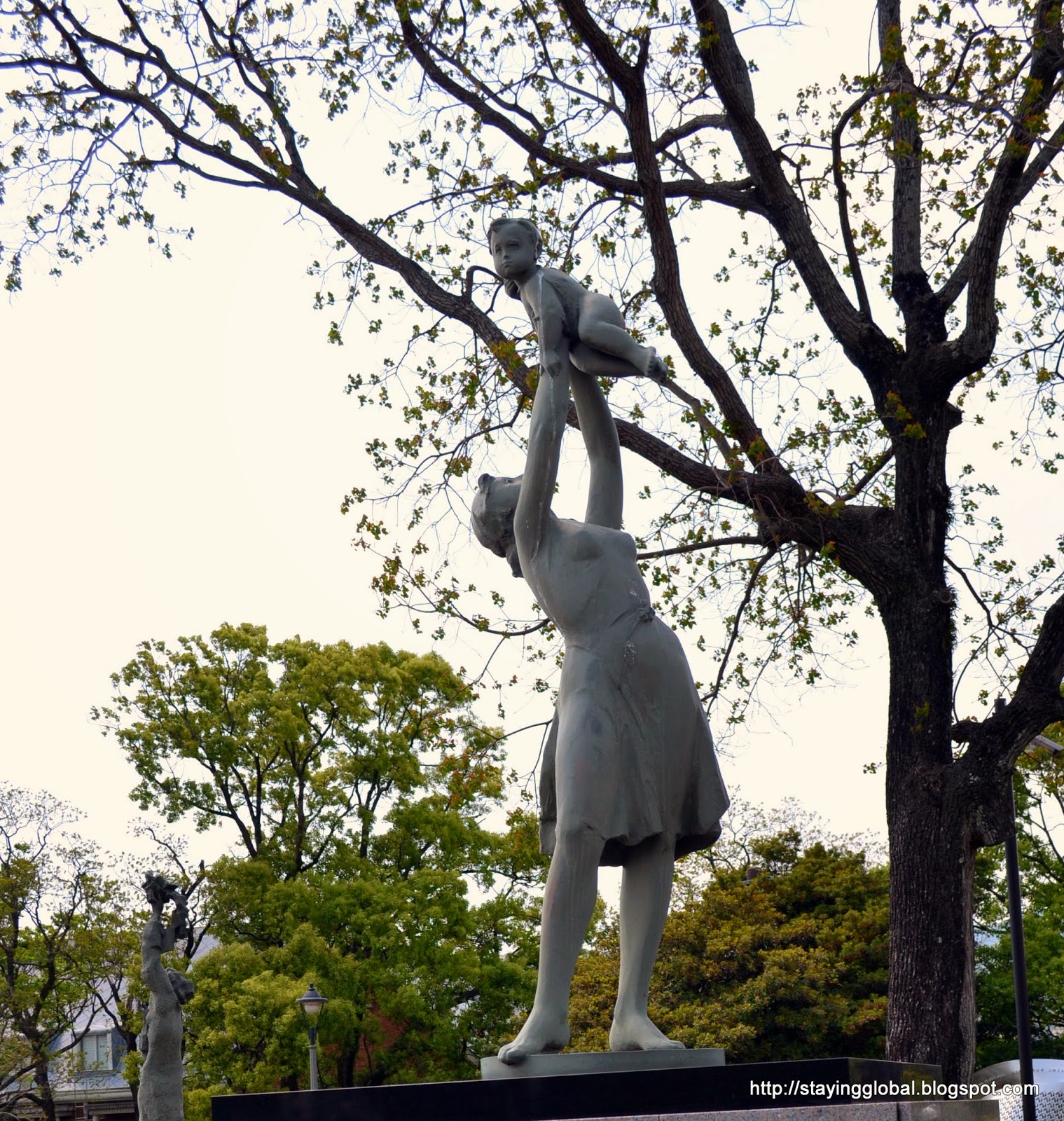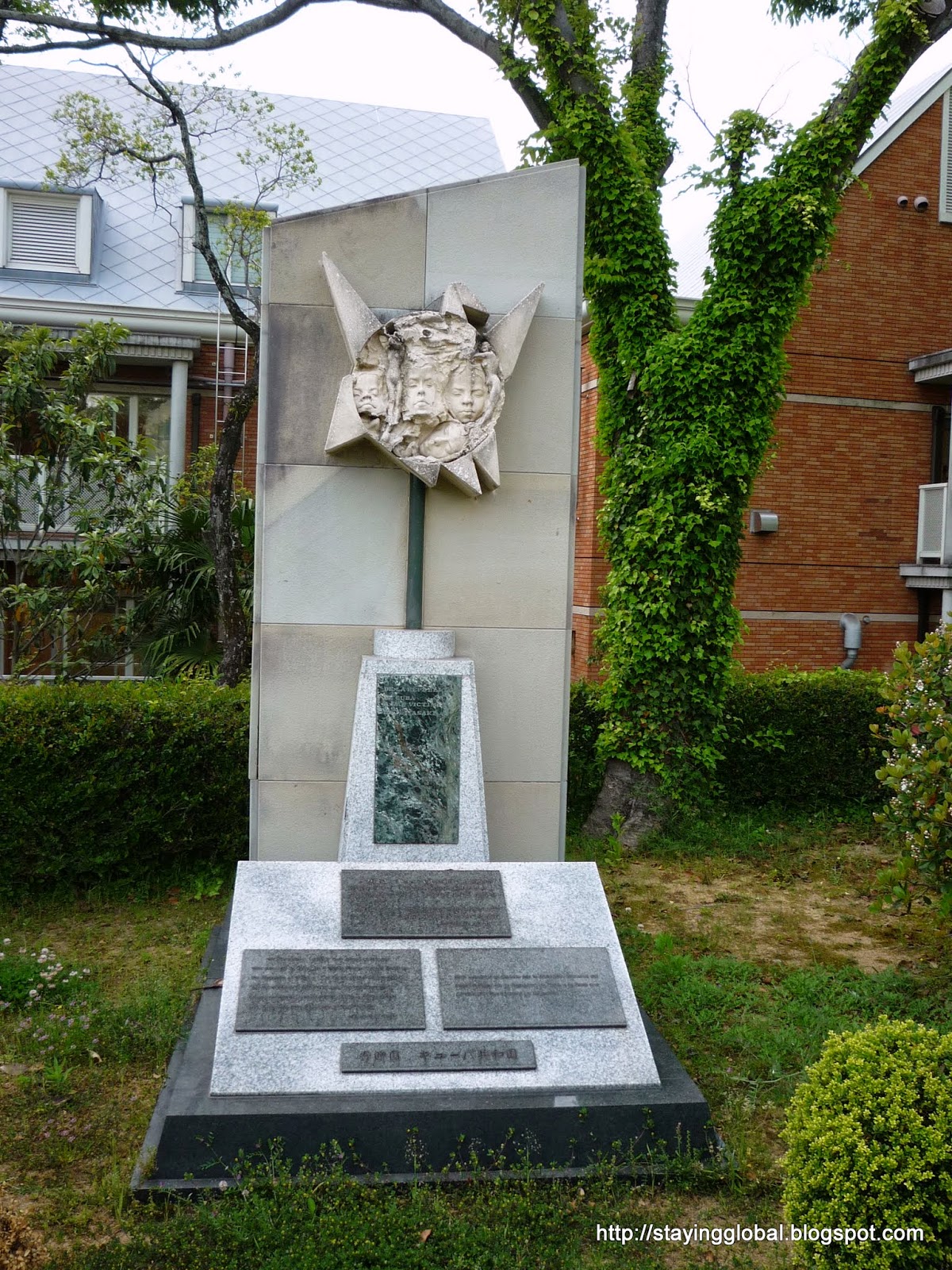The first place we visited in Nagasaki was the Peace Park.
The Peace Park commemorates the atomic bombing of Nagasaki on 9th August 1945 which resulted in thousands of deaths and widespread destruction. 6 days after the atomic bomb nicknamed, "Fat Man" was dropped on the city of Nagasaki, the World War II came to and end. At the time of the bombing, the Peace Park was the site of the Urakami Prison. All employees and prisoners were instantly killed in the bombing.
The Peace Park, "Heiwa Koen" in Japanese opened in 1950 in memory of the people who lost their lives. The Peace Statue, which is a symbol of the park was unveiled in 1955 to mark the 10th anniversary since that fateful day.
The 9.7 meter high statue was created by Kitamura Seibo, a Nagasaki born sculptor. The statue's right arm points to the sky signifying the threat of the nuclear weapons whereas the left arm stretches out horizontally symbolizing eternal peace.
The statue's closed eyes symbolize prayer for the victims of the bombing. The folded right leg signifies meditation while the extended left leg indicates the preparedness to stand up and rescue the people of the world.
The statue's closed eyes symbolize prayer for the victims of the bombing. The folded right leg signifies meditation while the extended left leg indicates the preparedness to stand up and rescue the people of the world.
A black marble vault containing names of all the atomic bomb victims and survivors who died in later years is placed near the statue.
People place flowers and "Senbazuru" (Thousand paper cranes on a string), a symbol of peace and longevity in Japan, in memory of those who lost their lives.
People place flowers and "Senbazuru" (Thousand paper cranes on a string), a symbol of peace and longevity in Japan, in memory of those who lost their lives.
The Bells of Nagasaki were added to the Park in 1977 and at 11:02 am (the time the bomb was dropped) the bells ring .
The Fountain of Peace was built in August 1969 as a prayer for the victims who lost their lives searching for water.
A poem by a young victim, Sachiko Yamaguchi are carved on a stone plaque in front of the fountain.
A part of the ground with brick foundations of the damaged Urakami Prison can be seen in the park.
A map shows the extent of damage caused by the bomb in Nagasaki.
Statues and sculptures donated by various countries are placed around the park.
A poem by a young victim, Sachiko Yamaguchi are carved on a stone plaque in front of the fountain.
A part of the ground with brick foundations of the damaged Urakami Prison can be seen in the park.
A map shows the extent of damage caused by the bomb in Nagasaki.
Statues and sculptures donated by various countries are placed around the park.
Entrance: Free
Nearest station: Matsuyama Machi station on Nagasaki Street Car Routes 1 and 3


















Hello there! What a wonderful blog--thank you for sharing it. I'm writing now about your terrific images of the Peace Statue. I wonder if you would consider talking with me about allowing your photograph (with attribution, *of course*) to be reproduced in a collection of literary studies essays forthcoming from McGill-Queens University Press. I have an essay about Kazuo Ishiguro's "Japan novels" in the collection, and would very much appreciate being able to use your photograph as an illustration. I can send you details if you are interested. Thank you for considering!
ReplyDelete